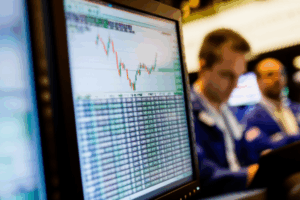Fed, Inflation, and War Clouds: Markets Navigate a Perfect Storm
The global financial markets are currently wrestling with a trifecta of powerful, interconnected forces that have coalesced into what many analysts are calling a “perfect storm.” At the epicentre are the Federal Reserve’s aggressive monetary policy, stubbornly high inflation, and escalating geopolitical tensions, which together are creating an environment of profound uncertainty and volatility for investors worldwide. For young adults navigating their initial forays into investing and personal finance, understanding these dynamics is not just academicit’s crucial for informed decision-making in a rapidly evolving economic landscape.
Central to the current market narrative is the Federal Reserve, the U.S. central bank, and its determined battle against inflation. For much of the past two years, the Fed has been on an unprecedented tightening cycle, hiking interest rates at a pace not seen in decades. Their primary mandate is to maintain price stability and foster maximum employment. With inflation surging to multi-decade highs, driven by a combination of robust consumer demand, lingering supply chain snarls, and energy price volatility, the Fed’s response has been to make borrowing more expensive. The goal is to cool down the economy, temper demand, and ultimately bring inflation back down to their target of 2%. While these measures are necessary to curb runaway prices, they come with significant implications. Higher interest rates translate to costlier mortgages, car loans, and business investments, which can slow economic growth and increase the risk of a recession. Investors, keenly watching every utterance from Fed officials, are constantly trying to decipher the future trajectory of rates, leading to pronounced swings in equity, bond, and currency markets. The tightrope walk between taming inflation and avoiding a severe economic downturnthe elusive “soft landing”remains the paramount challenge.
Adding to the complexity is the persistent nature of inflation itself. While there have been signs of moderation in some sectors, particularly commodity prices, overall price pressures remain elevated. This is not merely a U.S. phenomenon; many major economies are grappling with similar inflationary challenges. Factors contributing to this persistence include a tight labour market pushing up wages, a re-globalization trend that could increase production costs, and ongoing energy market volatility. For consumers, this translates directly to a higher cost of living, eroding purchasing power and making it harder to save. For businesses, it means higher operational costs, which can squeeze profit margins or force them to pass costs onto consumers, perpetuating the inflationary cycle. The interplay between inflation and central bank policy is symbiotic: if inflation remains sticky, central banks like the Fed will be compelled to maintain higher rates for longer, intensifying the squeeze on economic activity and potentially exacerbating market apprehension.
Compounding these economic headwinds are the “war clouds” – a euphemism for the geopolitical instability that has become a defining feature of the global landscape. From the protracted conflict in Ukraine, which continues to disrupt global energy and food supplies, to simmering tensions in the Middle East and other strategic regions, geopolitical risk is a pervasive concern. These conflicts don’t just inflict humanitarian costs; they have profound economic repercussions. They can trigger spikes in commodity prices, particularly oil and natural gas, directly feeding into inflationary pressures. They can also disrupt critical supply chains, re-route trade, and increase insurance costs for shipping. Beyond direct economic impacts, geopolitical instability erodes investor confidence, encouraging a flight to safetyoften into traditional havens like the U.S. dollar or government bondsand away from riskier assets like equities. This heightened uncertainty makes long-term planning incredibly difficult for businesses and can deter foreign direct investment, ultimately dampening global economic growth prospects.
Individually, each of these factors poses significant challenges. Together, they create a formidable environment where their effects amplify one another. High inflation necessitates aggressive Fed action, which in turn raises the risk of an economic slowdown. Geopolitical tensions can reignite inflationary pressures through commodity shocks, forcing central banks to maintain their hawkish stance. This feedback loop creates a challenging environment for investors, characterized by heightened volatility and a constant reassessment of risk versus reward. Navigating this perfect storm requires a nuanced understanding of these interconnected forces, an adaptability to changing market conditions, and a clear long-term perspective. While the immediate outlook may appear daunting, understanding the underlying drivers empowers young investors to make more informed choices, cultivate resilience in their portfolios, and potentially identify opportunities that emerge amidst the turbulence.





